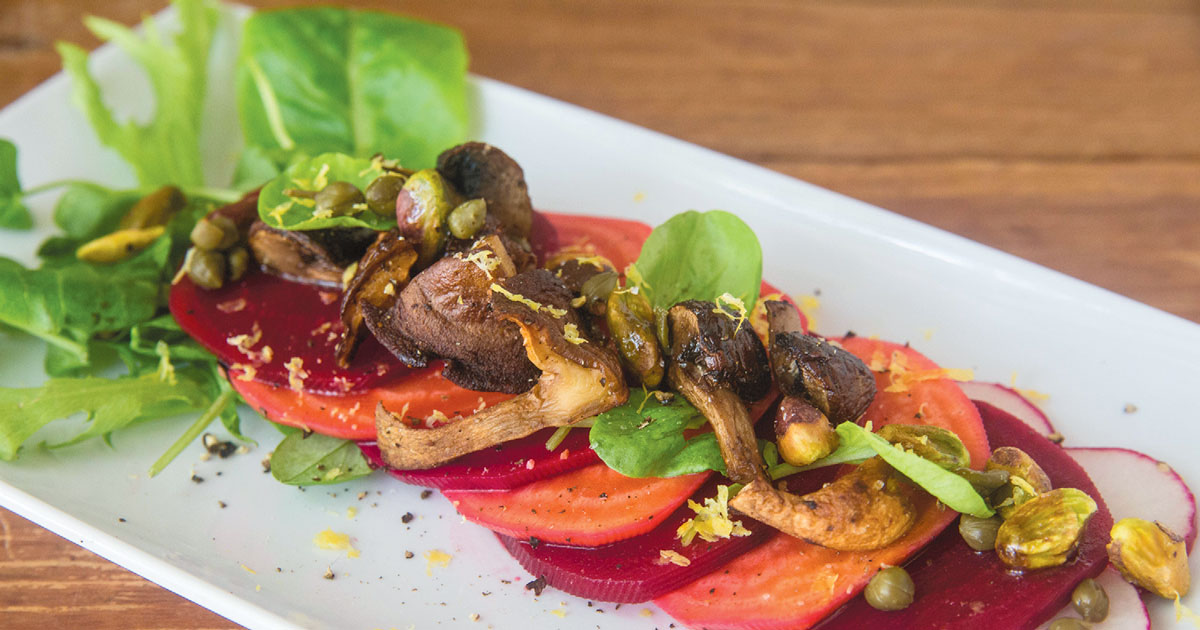Spotlight on Beets
I’d definitely be lying if I said I liked beets the first time that I had them. They emerged from a dusty can in the back recess of our pantry and hit my plate with a damp thud that emitted a dark red spurt of mystery liquid. I immediately pushed them to the side in a vain attempt to keep the ever-growing red pool of juice from contaminating the rest of my dinner — the part I knew I liked - but it was already far too late. Everything began to take on a pinkish hue and any initial curiosity had quickly been replaced with disgust. I already knew the rules of the table dictated that everything had to be at the very least attempted if not fully consumed, but I instinctually knew that this was going to be a challenge. Whether it was the foreign pigment, the clawing sweetness, the mushy nothingness of a texture, or the metallic earthiness, that first bite instantly confirmed that this was not going to work for me. I was never considered a picky eater, but I knew without question that I would avoid beets forever if given that option.
Anyone who has cooked a meal for over, say five people has come to the realization that certain ingredients, no matter how in nocuous in nature, can divide a room quicker than an election year discussion of politics. Why is it that ingredients like mushrooms, jalapenos, olives, Brussels sprouts, and cilantro can have some folks salivating with anticipation yet leave others looking for an excuse to vacate the table immediately? Food is, of course, as subjective as music or art or fashion — and no chef, no matter how accomplished or trained can make any one ingredient resonate with every diner. Palates and preferences are both inherent and cultivated and often any attempt to circumvent those hard-wired predilections is in vain.
Far too often though, writing off an ingredient as inherently unpleasant is more a case of letting an uninspired or unexperienced cook off way too easy. Raw, unseasoned potato is far from a coveted flavor, yet in tasting this dull affair no one would swear off fries or chips based on its relation to their lackluster cousin. Flaccid, rubbery bacon isn’t what sparked the culinary worlds seemingly never ending love affair with the ingredient, but you better believe you can still find it in kitchens and on plates around the globe. Far too often we blame the ingredient when we should really call it what it is — a misstep or misunderstanding on the part of the cook. With so many different techniques, cultural reference points, and seasoning options, anyone with an interest and a little determination should be able to find a preparation of just about anything that can entice and satisfy. Like the saying “it’s a poor craftsman that blames his tools.” I firmly believe that only an unimaginative or stubborn chef writes any “challenging” ingredient completely out of their repertoire.
As you might have guessed I did learn to like, even love beets (still not messing with those canned ones though), and it’s a good thing that I did. Besides being delicious, these too-often misunderstood veggies are packed with nutrition from root to greens. A member of the Chenopodiacae family alongside such superfoods as chard and spinach, beets are dense with calcium, iron, vitamins A & C, folic acid, fiber, manganese, potassium, vitamin B6, phosphorous, and much, much more. They stimulate the liver’s natural detoxification process and are reported to possess many anti-cancer properties. The dark pigment of beets is indicative of the presence of beta- cyanin(not sure about spelling), a known cancer fighting agent that can stimulate the growth of white blood cells. The sizeable fiber content even helps regulate cholesterol levels. If purchasing with the greens intact, do not throw them away! While the root is more commonly consumed (roasted, pickled, or raw), the greens are edible, as well, and actually possess the same pantheon of nutritional properties — albeit in significantly higher doses. Simply finely chop and add them in with salad greens to consume raw or sauté like you would any other green.
Somewhere between raw and pickled, this recipe highlights everything I now adore about beets; the subtle sweetness, the rich earthiness (or “dirt flavor” as seemingly every detractor mentions), the beautiful crimson hue, and the succulent, slightly crisp texture.





